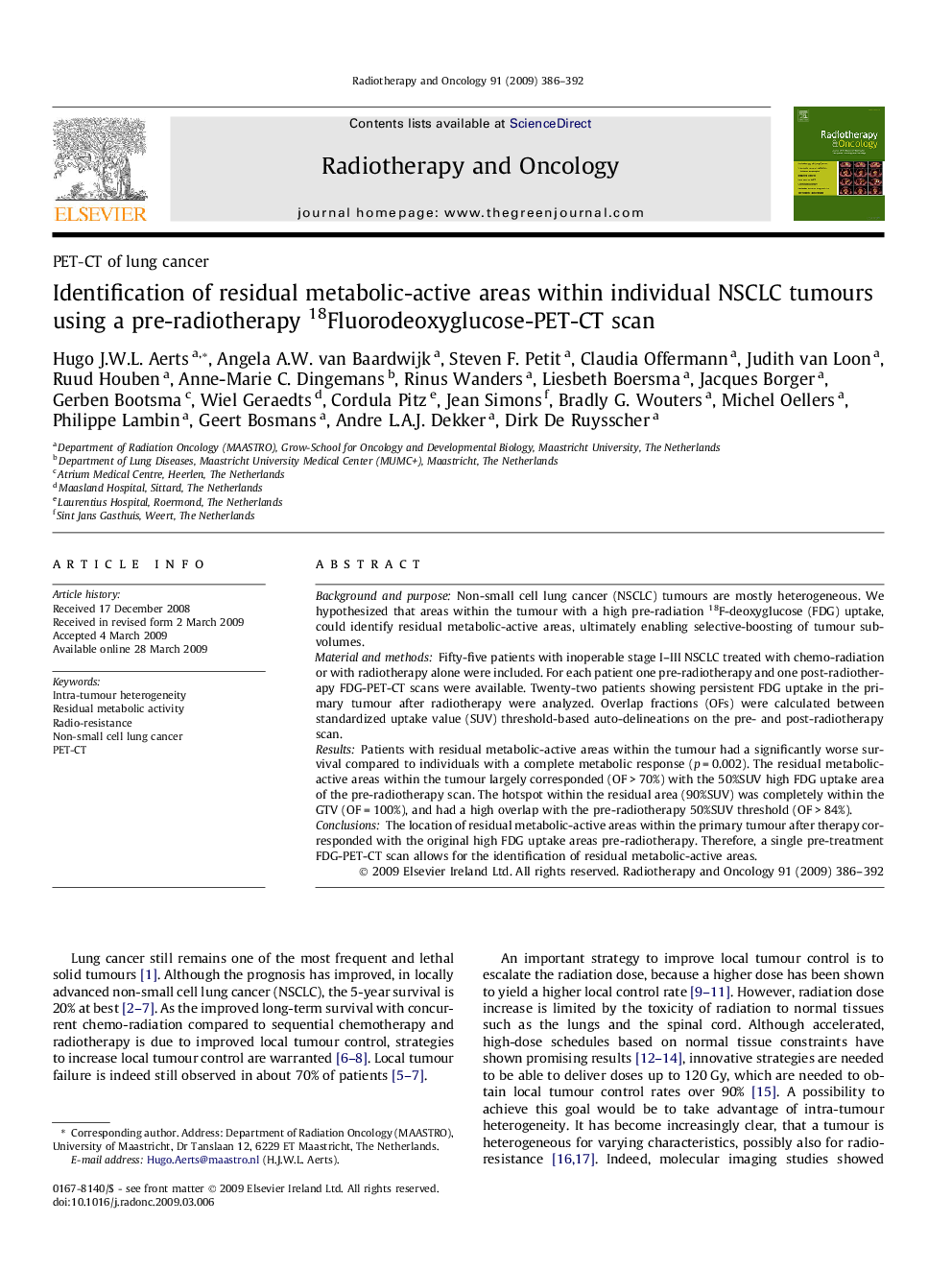| Article ID | Journal | Published Year | Pages | File Type |
|---|---|---|---|---|
| 2159121 | Radiotherapy and Oncology | 2009 | 7 Pages |
Background and purposeNon-small cell lung cancer (NSCLC) tumours are mostly heterogeneous. We hypothesized that areas within the tumour with a high pre-radiation 18F-deoxyglucose (FDG) uptake, could identify residual metabolic-active areas, ultimately enabling selective-boosting of tumour sub-volumes.Material and methodsFifty-five patients with inoperable stage I–III NSCLC treated with chemo-radiation or with radiotherapy alone were included. For each patient one pre-radiotherapy and one post-radiotherapy FDG-PET-CT scans were available. Twenty-two patients showing persistent FDG uptake in the primary tumour after radiotherapy were analyzed. Overlap fractions (OFs) were calculated between standardized uptake value (SUV) threshold-based auto-delineations on the pre- and post-radiotherapy scan.ResultsPatients with residual metabolic-active areas within the tumour had a significantly worse survival compared to individuals with a complete metabolic response (p = 0.002). The residual metabolic-active areas within the tumour largely corresponded (OF > 70%) with the 50%SUV high FDG uptake area of the pre-radiotherapy scan. The hotspot within the residual area (90%SUV) was completely within the GTV (OF = 100%), and had a high overlap with the pre-radiotherapy 50%SUV threshold (OF > 84%).ConclusionsThe location of residual metabolic-active areas within the primary tumour after therapy corresponded with the original high FDG uptake areas pre-radiotherapy. Therefore, a single pre-treatment FDG-PET-CT scan allows for the identification of residual metabolic-active areas.
